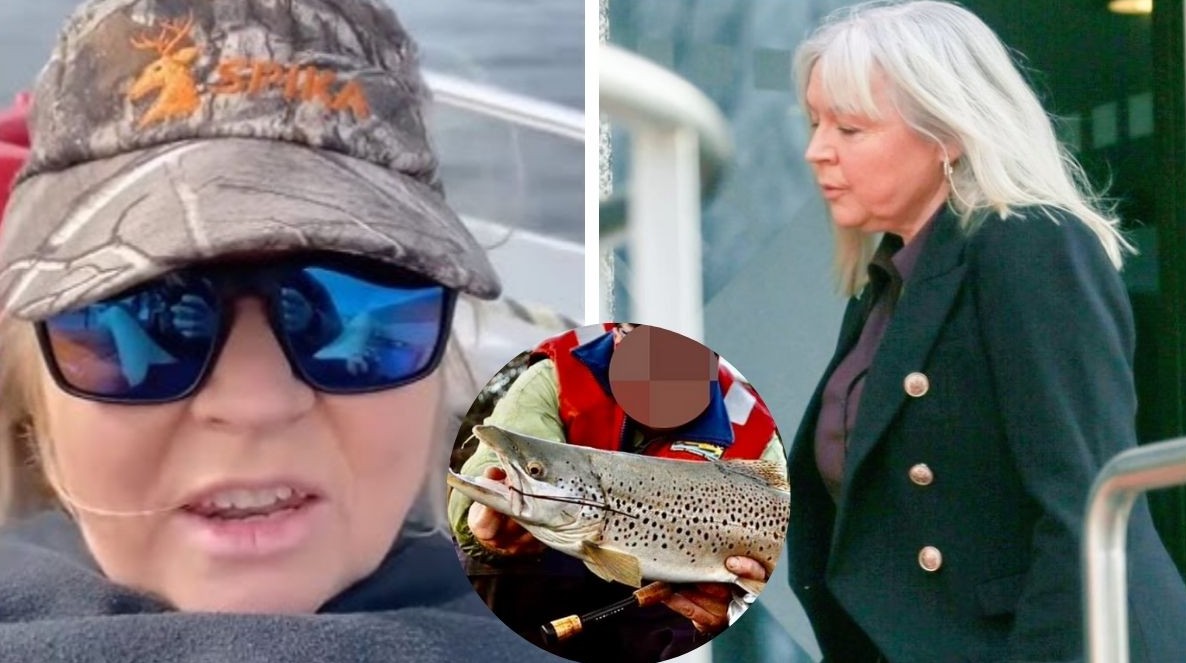The Trout Lady Video case has rapidly emerged as one of the most sensational legal and digital controversies of 2024. At the center of the uproar is Catherine June Lee, a 58-year-old woman from southern Tasmania, whose court appearance in August 2024 drew widespread media coverage and international attention. The video at the heart of the scandal, which circulated widely across social media platforms, allegedly depicts disturbing acts involving a live brown trout aboard a boat.

What initially began as a localized scandal in Tasmania soon evolved into a global discussion on digital ethics, public decency, and the responsibilities of online platforms. The incident not only tested the limits of privacy and morality in the digital era but also raised pressing questions about how law enforcement should address explicit and harmful online material.
The following sections provide a comprehensive overview of the event, the criminal charges, the public’s reaction, and the wider social and legal implications that continue to unfold from the Trout Lady Video
Contents
- 1 The Viral Origins of the Trout Lady Video
- 2 Legal Proceedings Involving Catherine June Lee
- 3 Involvement of Co-Accused Ashley David Hallam
- 4 Public Outcry Over the Trout Lady Video
- 5 The Influence of Digital Media in the Trout Lady Case
- 6 Legal Basis Under the Classification Enforcement Act
- 7 Chronology of Key Events
- 8 Broader Implications of the Case
The Viral Origins of the Trout Lady Video
In early 2024, a video later identified as the Trout Lady Video began circulating widely across social media and online forums. The footage allegedly shows a woman on a boat later confirmed to be Catherine June Lee accompanied by a man, with the content sparking immediate outrage and disgust among viewers.
Catherine June Lee’s Involvement in the Disturbing Fish Video
What made the situation escalate so dramatically was not only the nature of the video but also the speed of its online spread. Within just a few days, the clip had gone viral far beyond Tasmania, igniting global discussions and condemnation. The rapid virality of the footage underscored how digital platforms can amplify explicit or disturbing material, forcing both law enforcement and regulators to take swift action in response to public outcry.
Legal Proceedings Involving Catherine June Lee
On August 19, 2024, Catherine June Lee made her first appearance before the Hobart Magistrates Court following the emergence of the Trout Lady Video. She faces multiple charges under Australia’s Classification (Publications, Films and Computer Games) Enforcement Act, which regulates the creation, distribution, and possession of prohibited materials.
Lee has been charged with the following offenses:
One count of possessing a bestiality product between February 2022 and January 2023
Two counts of making or reproducing a bestiality product during the same period
Presiding Magistrate Marica Duvnjak granted an adjournment to allow for further investigation, scheduling the next court appearance for October 2024. The charges highlight the strict stance of Australian law regarding prohibited content, emphasizing the nation’s commitment to accountability and digital ethics.
Involvement of Co-Accused Ashley David Hallam
Alongside Lee, Ashley David Hallam, 55, has also been charged in connection with the incident. Hallam appeared in court earlier, in May 2024, when his charges were formally presented.

Hallam faces the following charges:
Two counts of making or reproducing a bestiality product
Three counts of possessing a bestiality product
The greater number of charges brought against Hallam suggests that he may have played a more significant role in the creation or distribution of the video. As legal proceedings continue, the court will assess the extent of each defendant’s involvement and determine the appropriate legal consequences based on the evidence presented.
Public Outcry Over the Trout Lady Video
The public reaction to the Trout Lady Video was immediate, intense, and far-reaching. As the footage spread beyond Tasmania, social media platforms, online communities, and news outlets erupted with shock and condemnation.
Key aspects of the public response included:
Widespread outrage and disgust, with many calling the content “disturbing” and “inhumane.”
Demands for strict legal consequences, as the public insisted that the case should set a legal precedent for dealing with similar digital offenses.
Debates over digital ethics and responsibility, focusing on how quickly harmful content spreads online and the shared duty of platforms and users to stop its circulation.
Authorities also issued official warnings, reminding the public that sharing or possessing the Trout Lady Video constitutes a criminal offense, underscoring the serious legal implications of such actions.
The Influence of Digital Media in the Trout Lady Case
The Trout Lady Video case has reignited debate over the power and reach of digital media in the modern world. Within hours of being uploaded, the video had spread across multiple social platforms, reaching a global audience and sparking widespread discussions.

This viral spread revealed several key challenges:
Law enforcement continues to struggle with the speed and scale of digital content distribution.
Public curiosity often fuels the rapid sharing of disturbing or illegal material, despite moral objections.
Ethical tensions persist between freedom of expression and the need to uphold community standards.
Ultimately, the case illustrates how one viral video can expose deep flaws in both online moderation and public behavior, emphasizing the urgent need for stronger digital accountability.
Legal Basis Under the Classification Enforcement Act
The charges against Catherine June Lee and Ashley David Hallam are based on Australia’s Classification (Publications, Films and Computer Games) Enforcement Act, a law designed to protect the public from harmful and indecent content.
The Act aims to:
Safeguard the community from offensive or exploitative material.
Ensure all forms of media comply with national standards of decency and legality.
Prohibit the creation, possession, and distribution of content depicting bestiality or similar acts.
By invoking this legislation, Australian authorities are sending a clear message: certain types of content have no place in society or on digital platforms, regardless of intent or context.
Chronology of Key Events
February 2022 – January 2023: Period during which the alleged video was produced and possessed.
May 2024: Co-accused Ashley David Hallam makes his initial court appearance.
August 19, 2024: Catherine June Lee appears before the Hobart Magistrates Court for the first time.
October 2024: Next scheduled court date following adjournment.
Broader Implications of the Case
The Trout Lady Video controversy raises complex and far-reaching questions that go beyond the individuals involved:
Moral Boundaries: Where should society draw the line between private behavior and criminal acts?
Digital Responsibility: What role should platforms, users, and governments play in curbing the spread of explicit or harmful content?
Legal Enforcement: Can existing laws keep pace with the viral nature of online media in today’s digital environment?
This case serves as a powerful reminder that digital actions carry real-world consequences not just for the accused, but for everyone exposed to the content.
The Trout Lady Video has become one of 2024’s most discussed legal and social controversies, drawing worldwide attention. With Lee and Hallam both facing serious charges, their upcoming trial will be closely watched in Tasmania and beyond.
As the case unfolds, it continues to spark urgent conversations about the responsibilities of digital citizenship, the boundaries of lawful expression, and the role of justice systems in addressing online misconduct. The outcome is expected to set a precedent for how similar incidents are treated in the future marking a defining moment at the intersection of law, technology, and social values.

